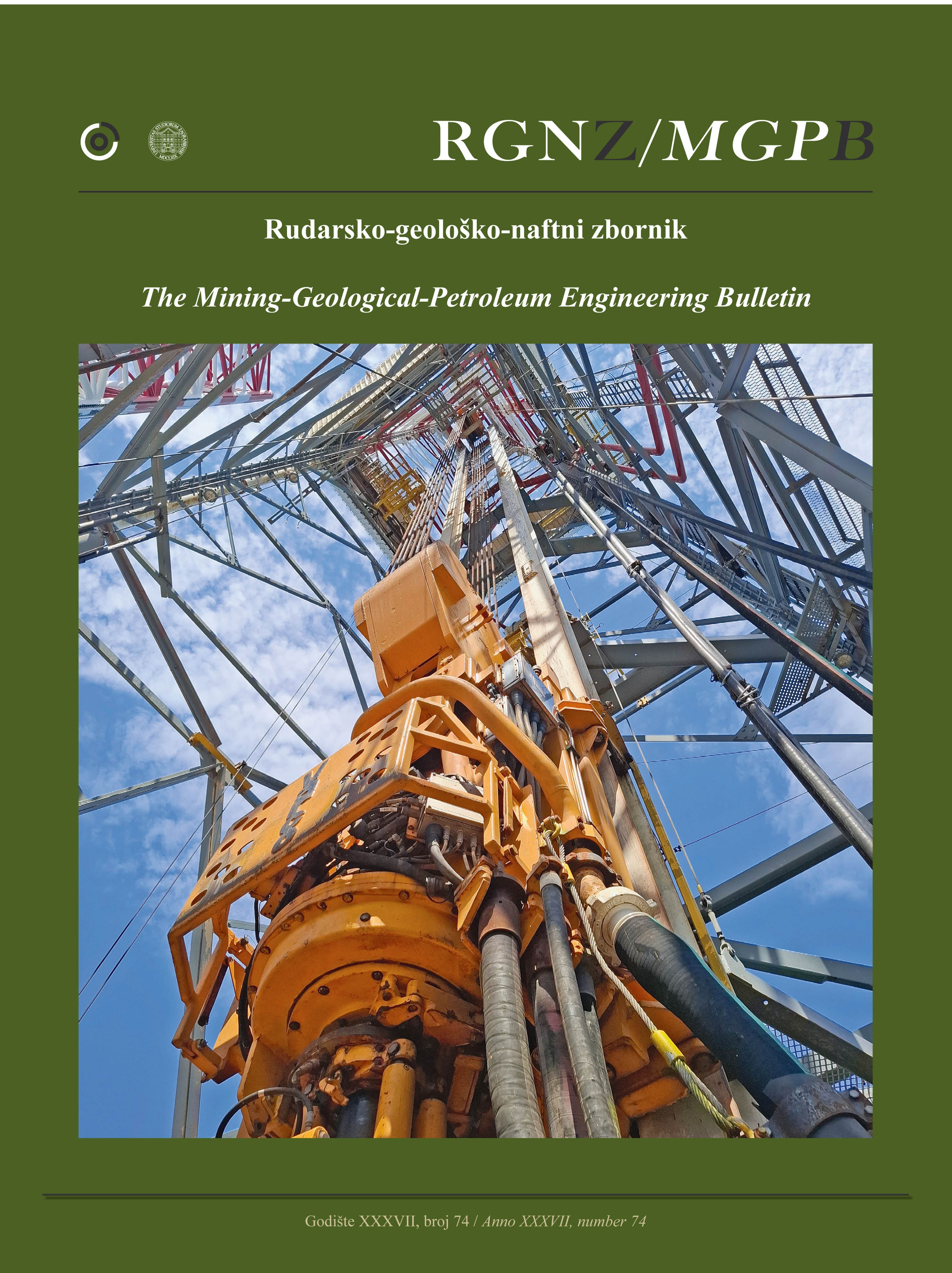Selecting the optimal scenario for the simultaneous application of diamond wire cutting and chainsaw machines in dimensional stone mines using SECA multi-criteria decision-making method
DOI:
https://doi.org/10.17794/rgn.2025.3.7Keywords:
discrete-event simulation, dimensional stone mine, diamond wire cutting, chainsaw machine, SECA methodAbstract
Currently, diamond wire cutting is used in most dimensional stone mines to extract stone blocks. Despite the capabilities of diamond wire cutting, stone extraction is associated with limitations or productivity loss in some cases. For this purpose, different scenarios resulting from the combination of diamond wire cutting and chainsaw machines had been investigated by discrete-event simulation in this research with the aim of improving the productivity of mining operations, and the best scenario was selected using the multi-criteria decision-making method of Simultaneous Evaluation of Criteria and Alternatives (SECA). In this research, the Shayan dimensional stone mine was selected as a case study, and based on the information related to mining operations, ten scenarios were defined for cutting the stone blocks. In the first scenario, a diamond wire cutting was alone used to cut all three sides of the block. In the second scenario, in addition to the diamond wire cutting, a chainsaw machine was added to the mining process to cut the back face of the block. In the third to sixth scenarios, in addition to the diamond wire cutting to cut side faces, a chainsaw machine was added to the mining process to cut the bottom face of the block. Depending on the continuity and intactness of the rock mass, and the need for horizontal drilling, the block dimensions varied across these scenarios. In the seventh to ninth scenarios, in addition to the diamond wire cutting to cut side faces, two chainsaw machines were used to cut both the back and the bottom faces of the block. These scenarios may differ in terms of the stone’s intactness, the need for horizontal drilling, and block dimensions. Finally, in the tenth scenario, both the back and bottom faces were cut using two chainsaw machines, while the side faces were cut using two squaring chainsaw machines. In order to find the best scenario to achieve the optimal technical and economic conditions, the SECA decision-making method was used due to the presence of several influential criteria. Based on the available information, four criteria including the production rate, capital cost, operating costs, and productivity were considered to compare the defined scenarios. According to the results, the final weights of the criteria were respectively equal to 0.228, 0.32, 0.239, and 0.213. Based on the criteria weights and the performance of each scenario across the criteria, the final scores of the scenarios were determined, and ultimately, the second scenario with a score of 0.655 emerged as the optimal configuration for the Shayan mine due to its balanced performance across all criteria.
Downloads
Published
Issue
Section
License
Copyright (c) 2025 Abbas Amou, Majid Ataee-pour, Satar Mahdevari

This work is licensed under a Creative Commons Attribution 4.0 International License.
Creative Commons-BY
Authors who publish with this journal agree to the following terms:
In agreeing this form, you certify that:
- You read the ethical codex of the RGN zbornik available at journal web.
- You submitted work is your original work, and has not previously been published and does not include any form of plagiarism.
- You own copyright in the submitted work, and are therefore permitted to assign the licence to publish to RGN zbornik.
- Your submitted work contains no violation of any existing copyright or other third party right or any material of an obscene, libellous or otherwise unlawful nature.
- You have obtained permission for and acknowledged the source of any illustrations, diagrams or other material included in the work of which you are not the copyright owner.
- You have taken due care to ensure the accuracy of the work, and that, to the best of your knowledge, there are no false statements made within it.
- All co-authors of this submitted work are aware of, and in agreement with, the terms of this licence and that the submitted manuscript has been approved by these authors.
Publication licence
You retain copyright in your submitted work, according to journal license policy (CC-BY). By signing this form you agree that RGN zbornik may publish it under the publication licence. In summary the licence allows the following:
Anyone is free:
- To copy, distribute, display, and perform the work.
- To make derivative works.
Under the following conditions:
- The original author must always be given credit.
- The work may not be used for commercial purposes.
- If the work is altered, transformed, or built upon, the resulting work may only be distributed under a licence identical to this one.
Exceptions to the licence
In addition to publishing the work printed under the above licence, RGN zbornik will also enable the work to be visible online.
The journal editorial can change the licence rules anytime but it cannot retroactively restrict author(s) rights.


